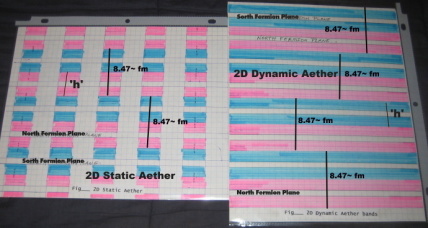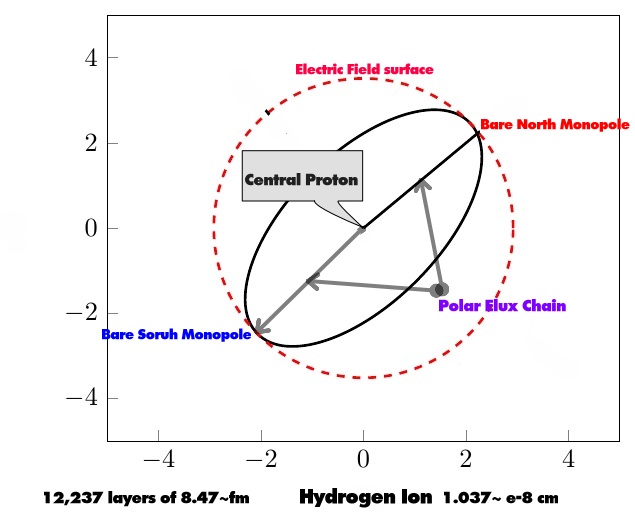| INDEX N | Name ____ | Electron masses | * .511 MeV | error % | Value______ | Notes__________ |
24 | H | 248832 | 127.1~ GeV
| -1.6% | 125.~ GeV | LHC Higgs as the upper limit. |
| 22.5 | Z | 180203 |
92.08 GeV | -1.1% | 91.18 GeV |
Neutral Weak Force Boson |
| 22 | W | 161051 | 82.3 GeV | -2.4%
| 80.4 GeV | Charged Weak Force Boson |
| 12+ | | | |
| | Exotic Matter Zones |
| 11 | MAX | 5033 | 2600 MeV | +10%
| ~2860 MeV | Baryon Scale volume Limit |
| 10 | Omega | 3124 | 1597 MeV | +4.6%
| 1673 MeV | Strange = -3 |
| 9 | Proton | 1845.3 | 943 MeV | -0.5%
| 938.3 MeV | Hydrogen |
| 8 | K' | 1024 | 523 MeV | -0.4%
| 520.6 MeV | K'=(Kaon+Eta)/2 |
| 7' | Pion | 275 | 140.52 MeV | -0.7%
| 139.6 MeV | 243+32=275 |
| 6 | Empty | 243 | 124 MeV | _
| | Table mid-zone |
| 5' | Muon | 211 | 107.82 MeV | -2.1%
| 105.66 MeV | 243-32=211
|
| 4 | PMF | 32 | 16.4 MeV | +1%
| 16.25 MeV | Nuclear Particle Mass Factor |
| 3 | CMP | ICA |
7.6 | 3.88 MeV | -4.8%
| 3.7 MeV | Composite Monopole Pair | Inverse Chrenkov limit |
| 2 | Electron | 1 | .511 MeV | 0
| .511 MeV | Table reference Mass
|
| 1 | ATOM | 1/32 | 16 Kev | -0.122% | 15.82~ | Smallest monopole Quantum = 67Kev/P^3 . |

